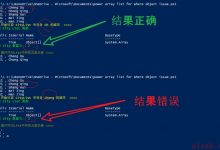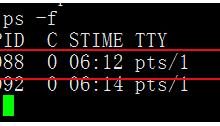SHELL练习题
1、统计/var/log下文件的个数。

2、如何将F1.txt文件的运行结果输出到F2.txt里?
vim test2.sh
#!/bin/bash./F1.txt | cat > F2.txt
vim F1.txt
echo \"F1\"
vim F2.txt
echo \"F2\"
chmod 755 test2.sh F1.txt F2.txtbash test2.shvim F2.txt

3、写一个脚本实现判断192.168.1.0/24 网络里,当前在线的ip有哪些,能ping通则认为在哪
vim test3.sh
#!/bin/bashfor ((n=1;n<=254;n++));doping -c 3 192.168.1.$n &> /dev/nullif [ $? -eq 0 ];thenecho \"$n online\"fidone
4、根据以下信息:
IP_Address MAC_Address Interface Static
10.66.10.250 80:71:7A:33:CA:A7 br on
10.66.10.249 5C:50:15:7F:3B:F5 br on
将以上文件名称test.txt文件中IP_Address,MAC_Address, Interface三项下的内容取出来,值以“:”分割,并呈格式显示出来。注:
10.66.10.250:80:71:7A:33:CA:A7:br
10.66.10.249:5C:50:15:7F:3B:F5:br
awk \'NR!=1{ofs=\":\";print $1,$2,$3}\' text.txt
5、在shell中变量的赋值有四种方法,其中采用name=oupeng.com的方法称:
直接赋值 使用read命令 使用命令行传参 使用命令输出
#!/bin/bashread -p \"name=\" qname=$qecho $name
6、编写一个脚本,5分钟检查一次日志,发现有暴力SSH破解现象的,提取此类IP地址,并去重,并按降序排序。
要求:同一个IP暴力破解超过10次,自动屏蔽IP地址,指定办公室IP地址(192.168.100.100)为可信任IP地址,不受屏蔽规则限制,以下为日志格式:
日志样式:
May 4 03:43:07 tz-monitor sshd{14003}: Failed password for root from 124.232.135.84 port 25251 ssh2
Myy 4 03:43:07 tz-monitor sshd{14082}: invalid user postgres from 124.232.135.84
#!/bin/bashawk \'/Failed password/{count[$(NF-3)]++}END{for (ip in count) if(count[ip]>=10){print count[ip],ip}}\' /var/log/secure > /tmp/count_ip.txtwhile read linedoIP=$(echo $line |awk \'{print $2}\')if [ \"$IP\" != \"192.168.100.100\" ];thenif ! grep -w $IP /tmp/drop_ip.txt &> /dev/null;theniptables -I INPUT -s $IP -j DROPecho $IP >> /tmp/drop_ip.txtfifidone < /tmp/count_ip.txt
*7、检查IP地址合规,请用shell编写代码,列出不以199或200开头的IP地址,如199.x.x.x 或200.x.x.x
Interface Physical Protocol IP Adderss
Eth1/0/1 up up 199.11.250.1
Eth1/0/2 up up 200.11.250.5
Loop0 up up(s) 199.11.250.1
Vlan1 down down unassigned
Vlan500 down down 139.100.1.157
Vlan900 up up 140.11.250.41
#!/bin/bashwhile read linedoisnum=$(echo $line | awk -F \"[ .]+\" \'{print $(NF-3)}\')if [[ $isnum =~ ^[0-9]+$ ]];thenif [ $isnum -ne 199 ] && [ $isnum -ne 200 ];thenecho $line | awk \'{print $NF}\'fifidone < /tmp/config.txt
**8、处理以下文件内容,将域名提取并进行计数排序,如处理:
http://www.baidu.com/index.html
http://www.baidu.com/1.html
http://post.baidu.com/index.html
http://mp3.baidu.com/index.html
http://www.baidu.com/3.html
http://post.baidu.com/2.html
得到如下结果:
域名的出现次数 域名
3 www.baidu.com
2 post.baidu.com
1 mp3.baidu.com**
awk -F \'/\' \'{count[$3]++}END{for (url in count) print count[url],url}\' url.txt |sort -rn
9、在单台服务器Linux操作系统环境下,写一行命令,将所有该机器的所有以“.log.bak“为后缀的文件,打包压缩并上传到ftp上,FTP地址为123.234.25.130的/home/bak文件夹
cd /find -type f -name \"*.log.bak\" |xargs tar zcf /tmp/all.tar.gzftp -i -n <<FTPITopen 123.234.25.130user username_xxx password_xxxbinpassivehashcd /home/baklcd /tmpput all.tar.gzquitFTPIT
10、Linux脚本:现在要删除本机中若干文件,/root/file.list中记录了这些文件的绝对路径,请用脚本实现。/root/file.list内容范例:/tmp/1.file
#!/bin/bashwhile read linedorm $line -fdone < /root/file.list
 爱站程序员基地
爱站程序员基地


